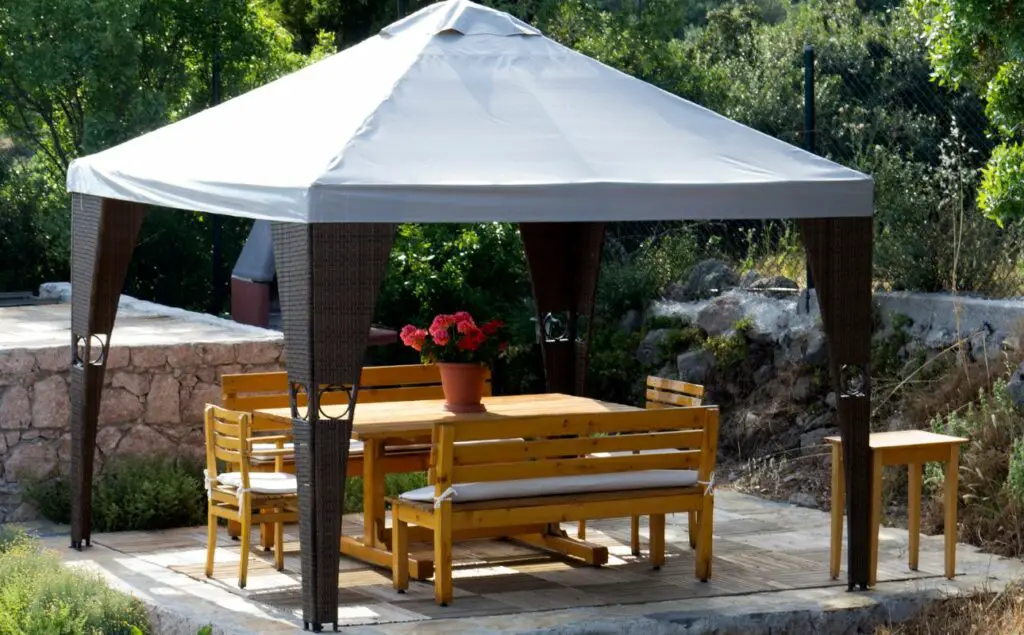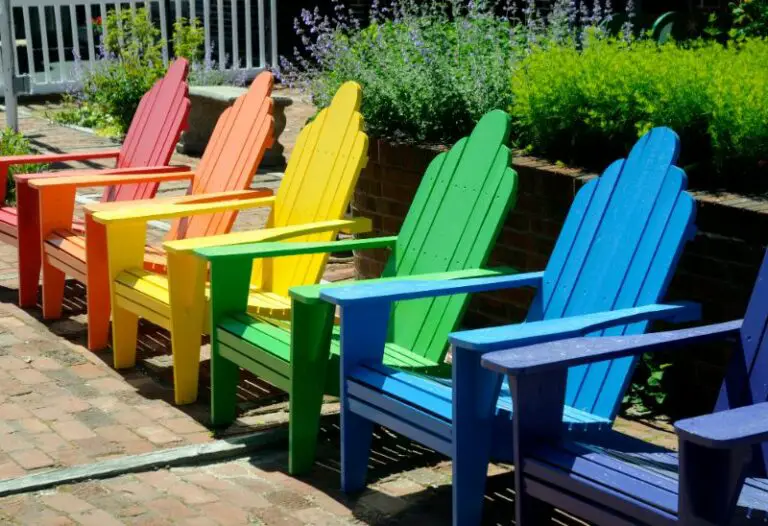With the increasing frequency of extreme weather conditions, homeowners are left wondering if their pergola can withstand high winds. This concern is valid as gusty winds can cause significant damage to outdoor structures, including collapsing roofs and flying debris.
So, can pergolas withstand high winds? The short answer is that it depends on several factors. The design of the pergola, the quality of materials used, the installation process, and the location all play a role in determining its wind resistance.
However, with proper planning and construction, a pergola can certainly withstand high winds and provide a reliable and durable outdoor structure for years to come.
We will look at different types of pergolas, their construction materials, and design features that contribute to their wind resistance.

Learn About Pergola Construction
These open-air frameworks are typically constructed with vertical posts supporting crossbeams and an open lattice for vines or other climbing plants. However, pergola maintenance is essential to ensure longevity.
When it comes to building a pergola, it’s vital to adhere to local building codes. Building codes regulate the construction process and help keep people safe from harm.
For instance, many areas require concrete footings at least 36 inches deep to prevent uplift in high winds. Additionally, some cities have specific regulations regarding height limits and setback requirements.
While pergolas can provide shade and shelter for outdoor gatherings, they may not be able to withstand high winds on their own. Proper installation techniques like using hurricane ties and ensuring adequate bracing can help reinforce your pergola against strong gusts of wind.
If you live in an area prone to severe weather conditions such as hurricanes or tornadoes, it might be best to consult a professional builder who could recommend suitable designs for your region without compromising style or function.
Types Of Pergolas And Their Wind Resistance
When it comes to preventing wind damage on your outdoor structure, there are various precautions you can take.
One effective method of protecting your pergola from harsh weather conditions is by selecting the appropriate material for its construction. For instance, aluminum and vinyl are durable materials that offer excellent resistance against strong winds compared to wood or steel.
Another way to reduce wind damage on your pergola is by installing additional support beams or braces throughout the structure. These reinforcements will help distribute weight evenly across the posts while also providing extra stability during heavy gusts of wind.
Overall, understanding how wind affects your pergola’s durability is essential when constructing an outdoor living space.
By taking the necessary measures to prevent wind damage and using suitable materials during construction, you can extend your pergola’s life expectancy and enjoy it for many years to come without worrying about severe weather conditions damaging it.
Design Features For Wind Resistance
Design aesthetics play a significant role in the construction of pergolas. It is essential to strike a balance between functionality and visual appeal while designing a structure that can withstand high winds.
Many pergola designs prioritize an open, airy feel with minimal obstruction to the view. However, this may not be practical when it comes to wind resistance.
To improve the wind resistance of your pergola, there are various design features you can incorporate:
- Use Thicker Beams: Thicker beams provide better structural integrity and can help distribute weight evenly across the structure.
- Install Sturdy Footings: Footings act as anchors for your pergola and should be installed deep into the ground for maximum stability.
- Opt For Diagonal Bracing: Diagonal braces add extra strength by preventing lateral movement caused by strong winds.
Remember always to consider environmental factors when building outdoor structures like pergolas so they can stand up against any weather conditions mother nature throws their way!
Materials For Wind Resistant Pergolas
When it comes to materials, wood, and vinyl are popular choices due to their aesthetic appeal and versatility. However, they may not be the most suitable for areas prone to strong gusts of wind. For this reason, steel or aluminum may be better options as they offer superior strength and stability against extreme weather conditions.
Moreover, using fibreglass or polycarbonate panels for the roof instead of traditional roofing materials like shingles or tiles can also help enhance a pergola’s wind resistance capabilities. These lightweight yet durable materials allow air to pass through them while still providing ample protection from rain and sunlight.
Wind Ratings And Pergola Safety
The wind is one of the biggest threats to pergola structures, especially those made from lightweight materials. Pergola wind ratings vary depending on factors such as location, structure design, and material quality.
The American Society of Civil Engineers (ASCE) provides guidelines for determining wind loads on structural components like pergolas. It’s recommended that homeowners consult with licensed professionals or experienced contractors to evaluate their specific situation and determine if additional reinforcement or building modifications are needed.
Safety precautions should also be taken by homeowners when expecting high winds. Before any storm hits, remove all loose items around the pergola area including furniture, cushions, and planters.
If possible, retract any awnings or canopies attached to the pergola to minimize wind resistance. Additionally, regularly inspecting the structure for signs of wear and tear or damage can help prevent potential hazards during high winds.
To reinforce weak points, add extra screws or bolts where necessary. Use sturdy materials such as cedar wood or metal rather than flimsy plastic options. Installing braces for your posts will add extra support in times of strong winds.
Preparing Your Pergola For High Winds
While many pergolas can withstand moderate gusts of wind, extreme weather conditions require extra precautions. The last thing anyone wants is a loose or collapsing structure in their yard.
One way to ensure your pergola stays put during high winds is by using proper anchoring methods. This includes securing the posts with concrete footings, adding sandbags or weights to the bottom of each post, or even installing additional support beams.
It’s also essential to regularly inspect your pergola for any wear and tear that could compromise its stability.
Emergency preparedness should also be top of mind when dealing with potential high winds. Have a plan in place for quickly disassembling your pergola if necessary, and make sure all family members know what to do in case severe weather strikes.
Keeping an eye on local forecasts and staying up-to-date on any potential storm warnings will help you stay ahead of the game.
Reinforcing Your Pergola Against Strong Winds
To ensure that your pergola withstands high winds, there are several reinforcing techniques you can employ.
One effective technique for reinforcing your pergola against strong winds is by using concrete footings rather than surface mount brackets. This provides a more secure foundation for the structure and reduces the risk of uplift during windy conditions.
Adding diagonal bracing to the posts of your pergola can help distribute wind loads evenly throughout the structure.
Wind load testing is also an important factor to consider when reinforcing your pergola. A professional engineer can perform these tests to determine how much force your specific location experiences during different wind speeds and directions. Based on this information, they can recommend additional reinforcement measures such as steel cables or heavier lumber components.
The Bottom Line
It is recommended to anchor the pergola securely to the ground using concrete footings or anchors to increase its wind resistance. Adding curtains or screens to the sides of the pergola can also help improve its wind resistance.
It is important to note that building regulations and codes may vary depending on your location and local weather conditions. Therefore, it is advisable to consult a professional before constructing a pergola in areas with high winds.
Regular inspection of your pergola for any damage or wear and tear caused by strong winds should be performed at least once every six months to ensure safety and longevity.





